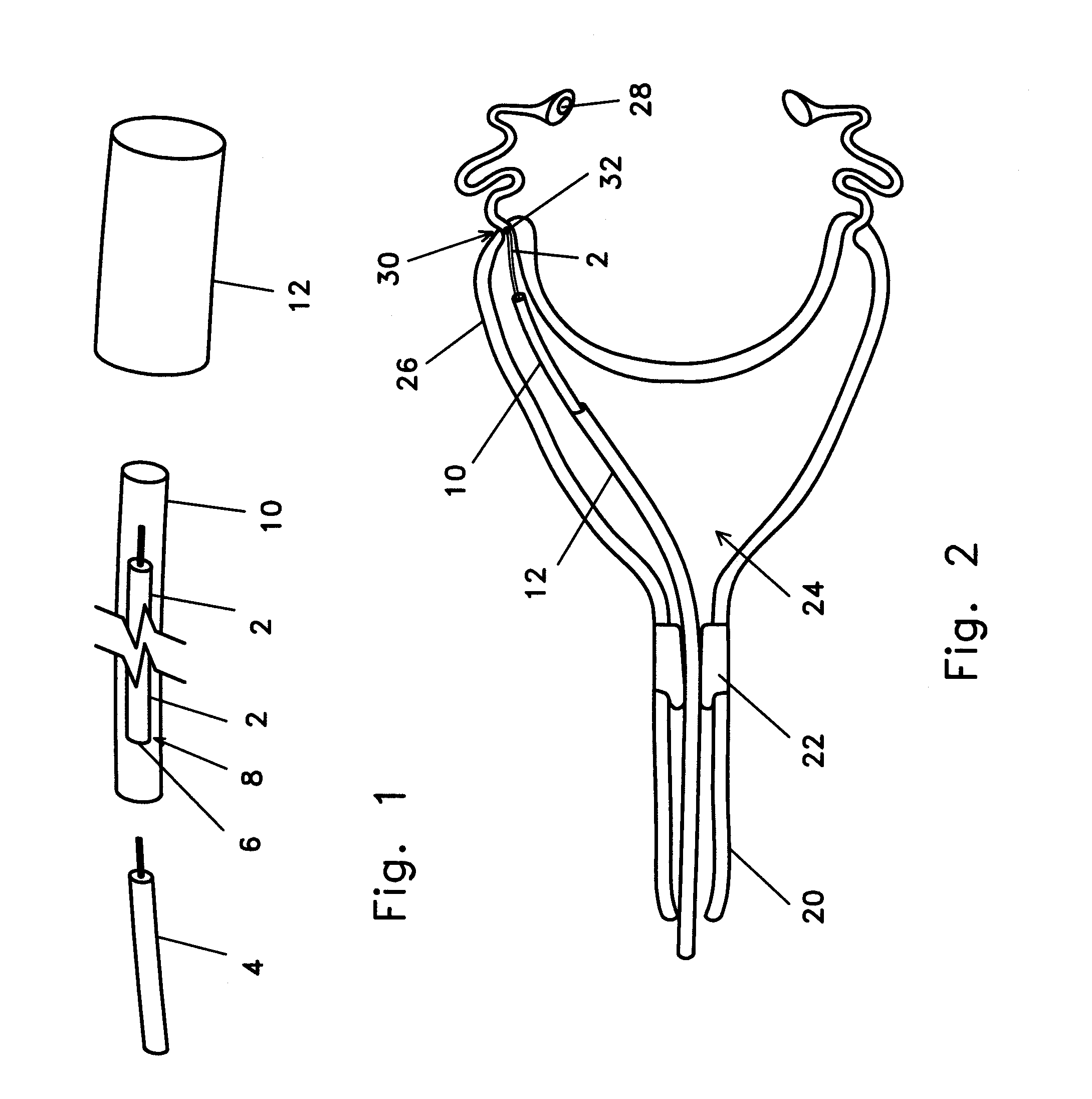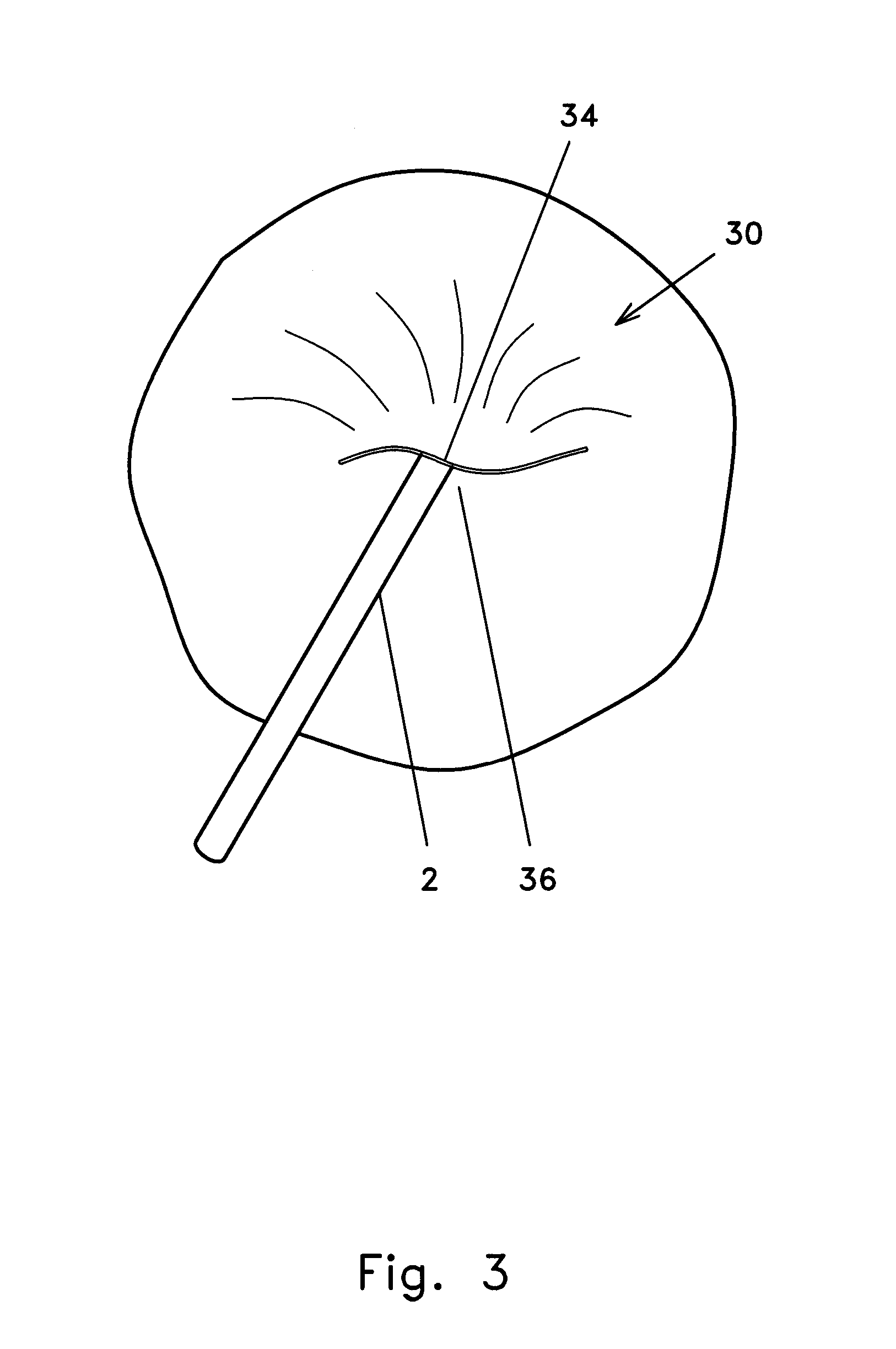Natural insemination doses may typically be large.
With low sort rates of around 700 spermatozoa per second in some
sperm sorting technologies, it may take several days to obtain the recommended
dose of spermatozoa for artificial insemination.
This may not only be impractical, but the viability of the spermatozoa may also be significantly reduced.
Additionally, what might be considered low doses for insemination may not typically result in acceptable
fertility rates.
Only limited success, however, has been demonstrated in utilizing the above described procedures in conventional AI and in the Vasquez et al. and the Manning et al. procedures.
Despite the previous and substantial attempts at producing an efficient procedure for AI, heretofore, a long felt but unsatisfied need for an efficient procedure for the hysteroscopic insemination of mammals has existed in breeding technology.
However, Vasquez et al., 2000, may have identified the long felt but unsatisfied need for an insemination procedure to address breeding technologies utilizing lower spermatozoa numbers for insemination, such as may result from current
sperm sorting technologies.
Therefore, as may have been demonstrated from the Vasquez et al., 1998, Vasquez et al., 2000, and Manning et al., 1998, references, those skilled in the art may have failed to address the identified need for providing an insemination technique potentially resulting in
high fertility rates in mammals and the resulting high production in mammals,
high fertility rates for low insemination dosages, and insemination techniques to address issues of efficaciousness, particularly with regard to the hysteroscopic insemination technique.
However, heretofore the substantial efforts to fractionate viable or
motile sperm have not particularly addressed the identified needs for an insemination technique potentially providing
high fertility rates, high
fertility rates for low insemination dosages, and insemination techniques to address issues of efficaciousness, particularly with regard to the hysteroscopic insemination technique.
A second potential issue with regard to insemination procedure, generally, is the establishment of a insemination
dose containing desirable numbers of viable and motile spermatozoa to potentially provide higher
fertility rates without a particular
motility test, as described above.
The introduction of a density or
viscosity gradient may introduce a stress to the spermatozoa that may actually reduce the actual number of viable and motile spermatozoa available from a particular sample.
Heretofore, the substantial efforts to fractionate viable or
motile sperm have not particularly addressed the identified needs for an insemination technique providing for high fertility rates, high fertility rates for low insemination dosages, and insemination techniques to address issues of efficaciousness, particularly with regard to the hysteroscopic insemination technique.
A third potential issue with regard to insemination procedure, generally, is the establishment of a compatible volume for the particular insemination technique.
However, determining a compatible insemination
dose volume for a particular insemination technique, to further potentially provide higher rates of fertility, has potentially not been established for hysteroscopic insemination, as the reported fertility rates in Vasquez et al. and Manning et al. may demonstrate.
However, the particular media used may not be compatible with the insemination procedure itself.
Incompatibility of the sample media may result in lower deposition numbers of spermatozoa or dose volume or a lower fertility rate.
Furthermore, the mode or form of the deposited insemination dose or the particular method of deposit during AI may further affect the number of deposited spermatozoa available for conception.
However, heretofore the substantial efforts directed toward insemination media may have not particularly addressed the need for providing an insemination technique potentially resulting in high fertility rates, high fertility rates for low insemination dosages, and insemination techniques to address issues of efficaciousness, particularly with regard to the hysteroscopic insemination technique.
However, heretofore the substantial efforts directed to insemination timing may have not particularly addressed the identified needs for, and may have even failed to understand the problems of, providing an insemination technique potentially resulting in high fertility rates, high fertility rates for low insemination dosages, and insemination techniques to address issues of efficaciousness, particularly with regard to the hysteroscopic insemination technique.
However, heretofore the substantial efforts directed to sperm source, viability and insemination timing may have not fully addressed the identified needs for, and may have even failed to understand the problems of, providing an insemination technique potentially resulting in high fertility rates, high fertility rates for low insemination dosages, and insemination techniques to address issues of efficaciousness, particularly with regard to the hysteroscopic insemination technique.
 Login to View More
Login to View More 

